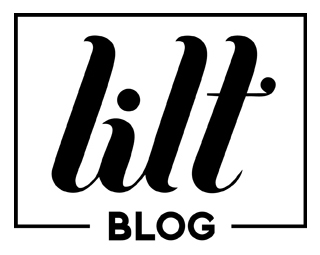
There is something very special about Simétrie bags. If you haven’t yet heard of this local Melbourne small business it’s worth paying attention.
In a world of fast fashion fads, Simétrie rejects the notion quick trend turnover and instead celebrates the balance of our human desire for style and the aesthetically pleasing, with consideration to our impact on the earth.
Simone Agius, founder of Simétrie, started the label with the idea to combine all her passions into one practice – To create beautiful bags, provide local jobs, use the best materials possible to minimise fashion’s impact on our Earth, and to teach people the wonderful feeling it is to make something beautiful too.
Her natural leather goods are timeless, made using the most sustainable materials available, and handcrafted in Melbourne by local craftswomen who are paid fairly in exchange for their skilled craftsmanship. An important fact to note.
‘We do this because we know that our planet and humans have been exploited by the fashion manufacturing process for too long. The facts are very clear that the industry is taking too much from environment and human resources to fuel the ever-growing desire to consume fashion products. ‘ Says Simone.
Simétrie’s response to this is to be a “slow” fashion business, empower people through education and self-advocacy, and use the most responsible materials available to craft beautiful wares that people will love for many many years to come.
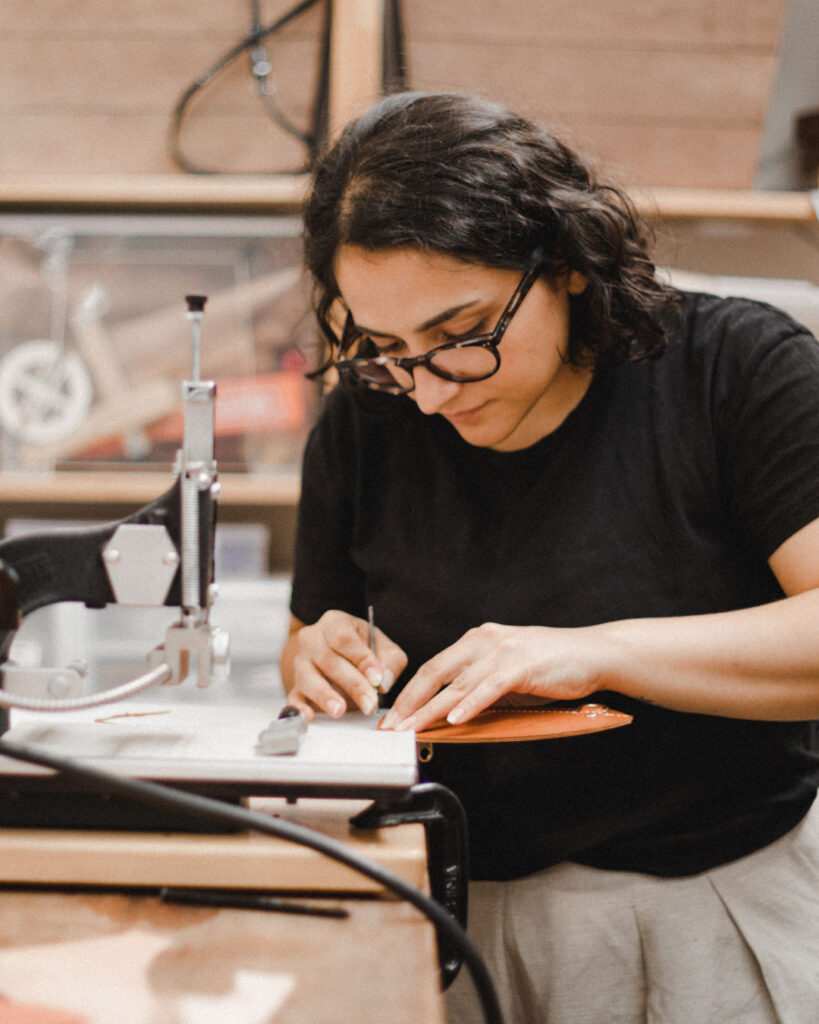
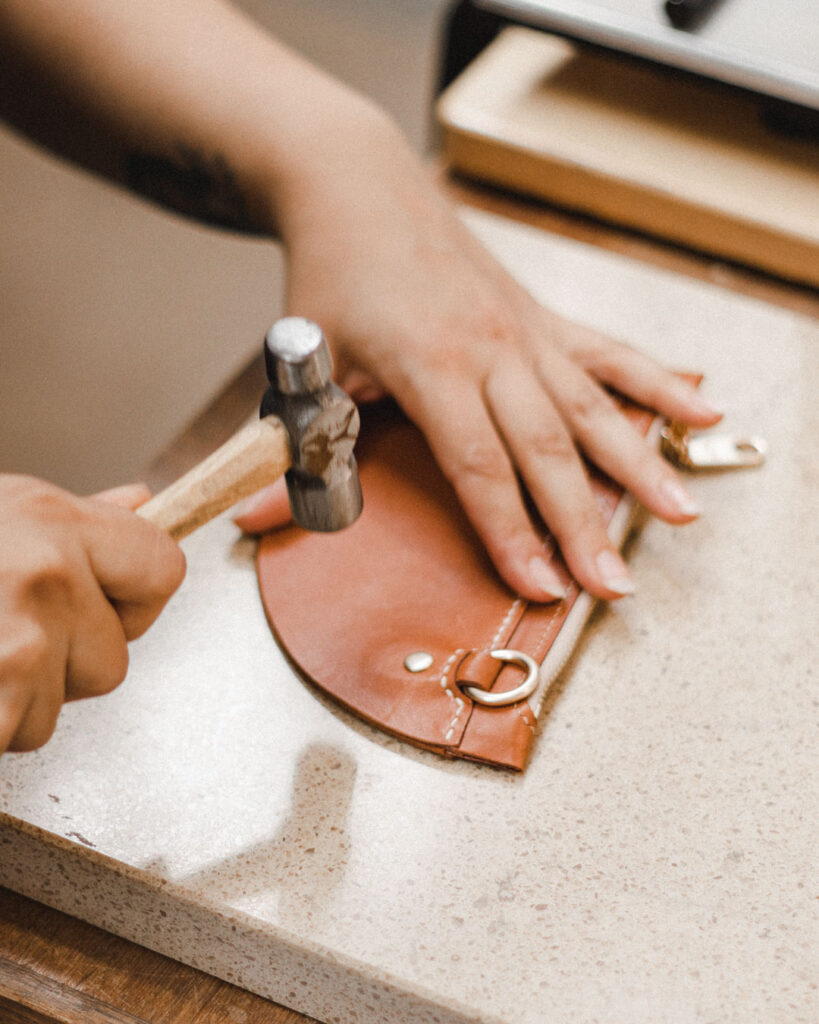
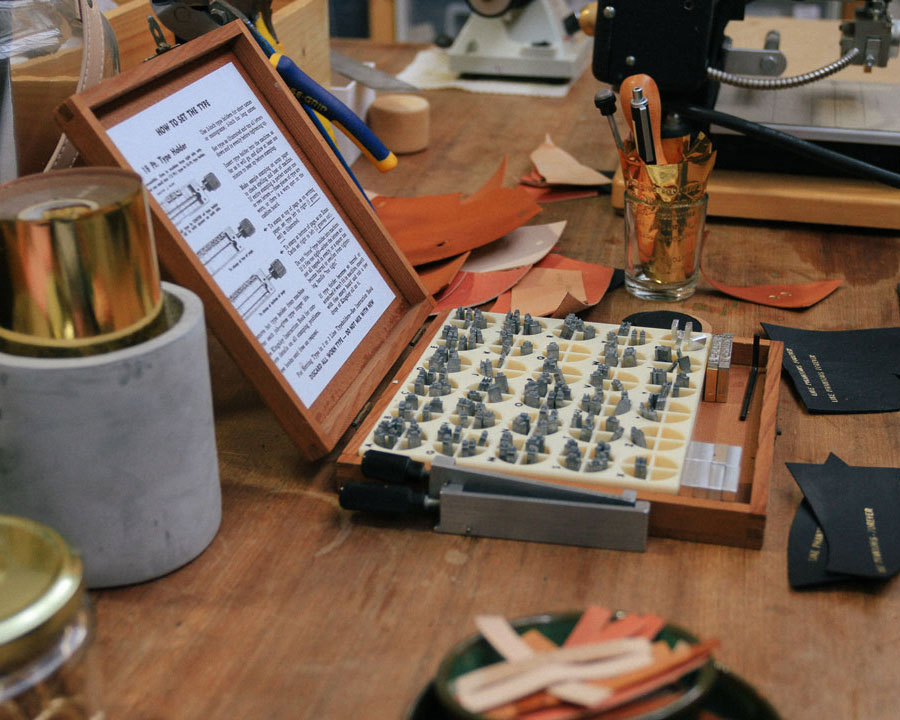
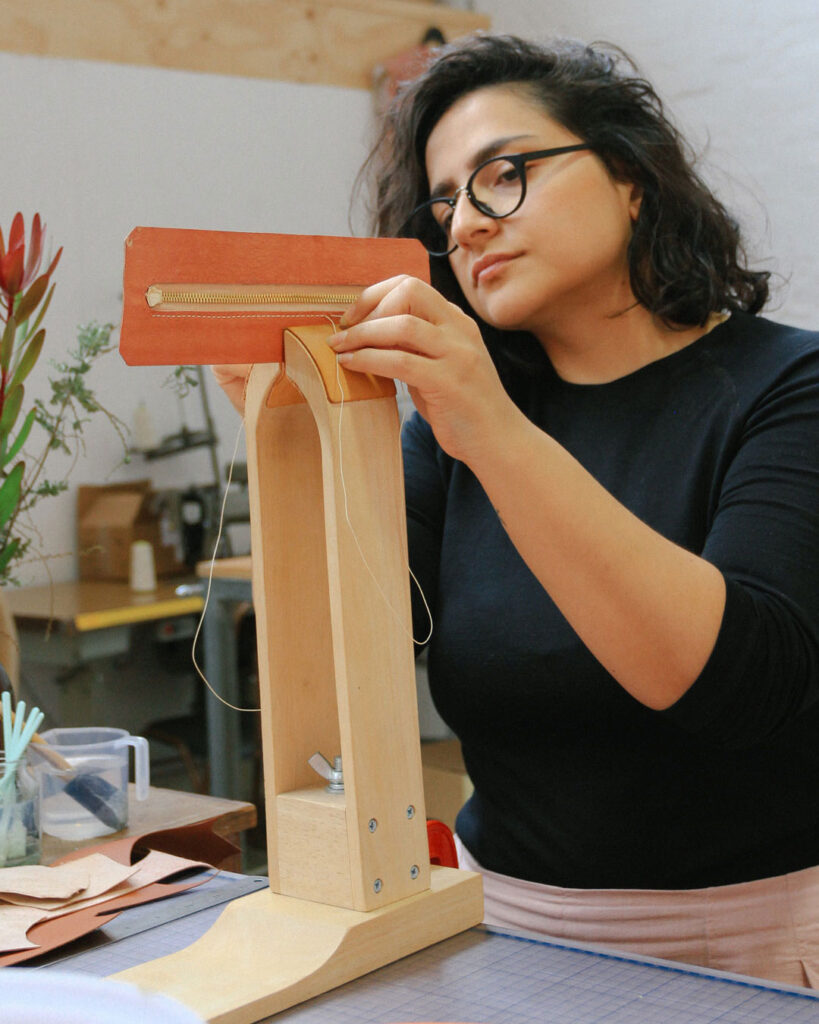
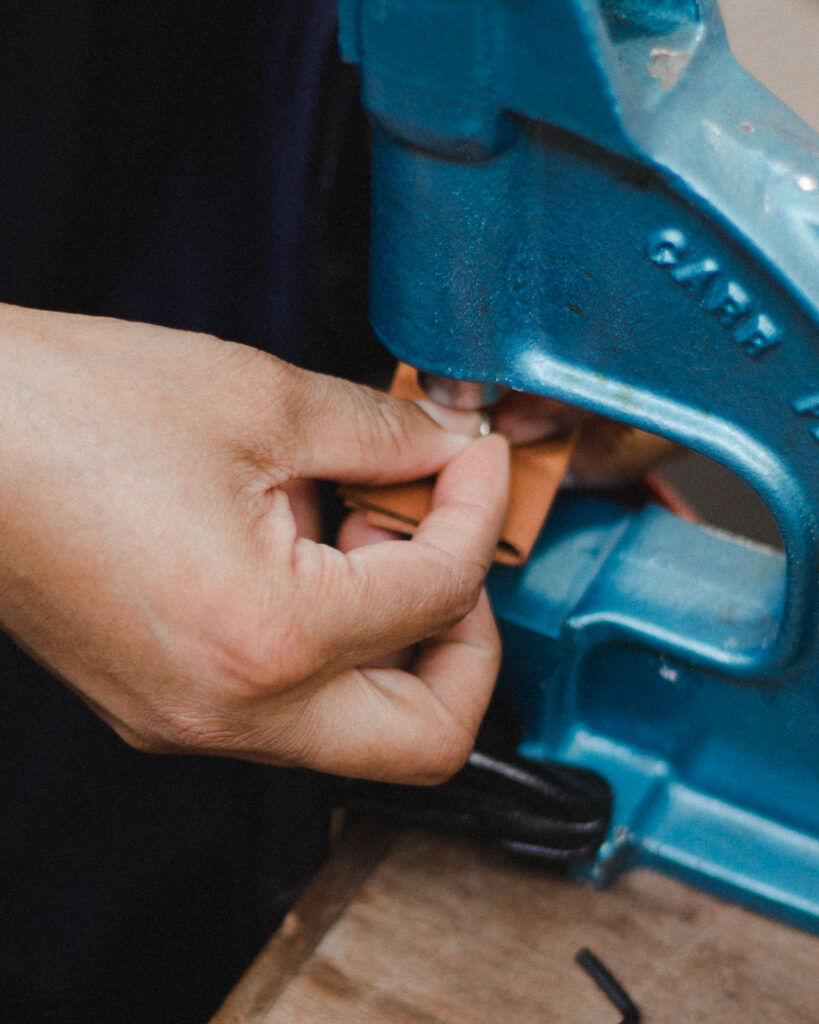
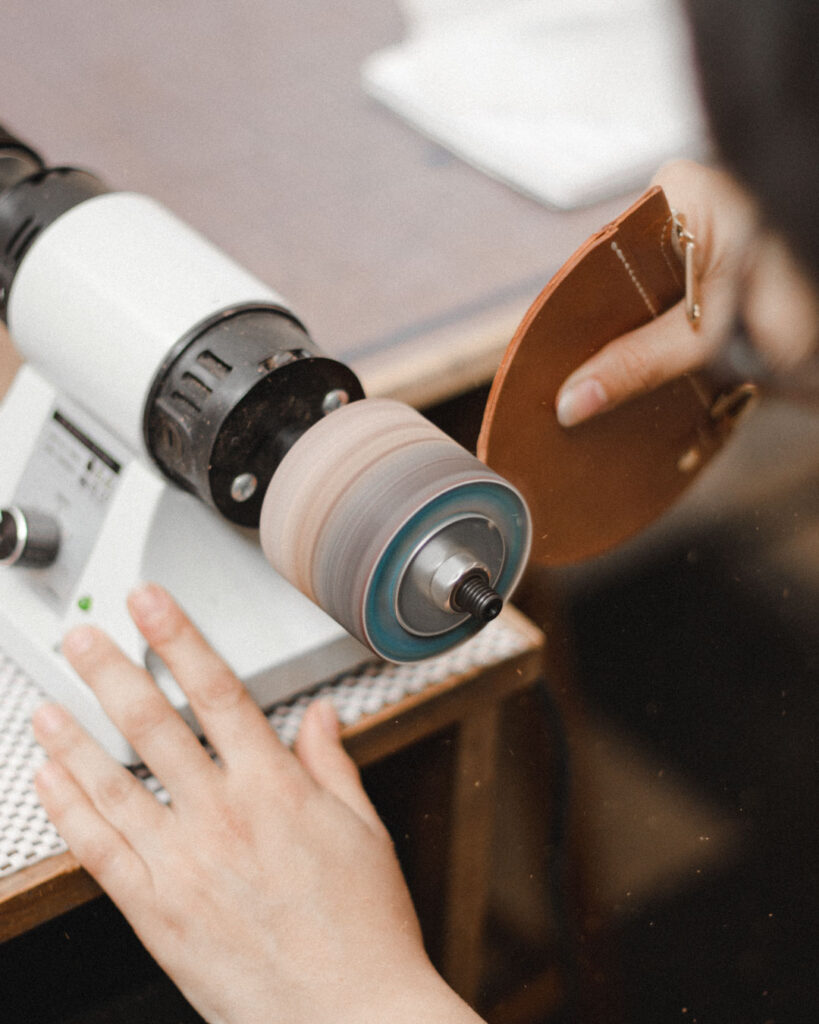
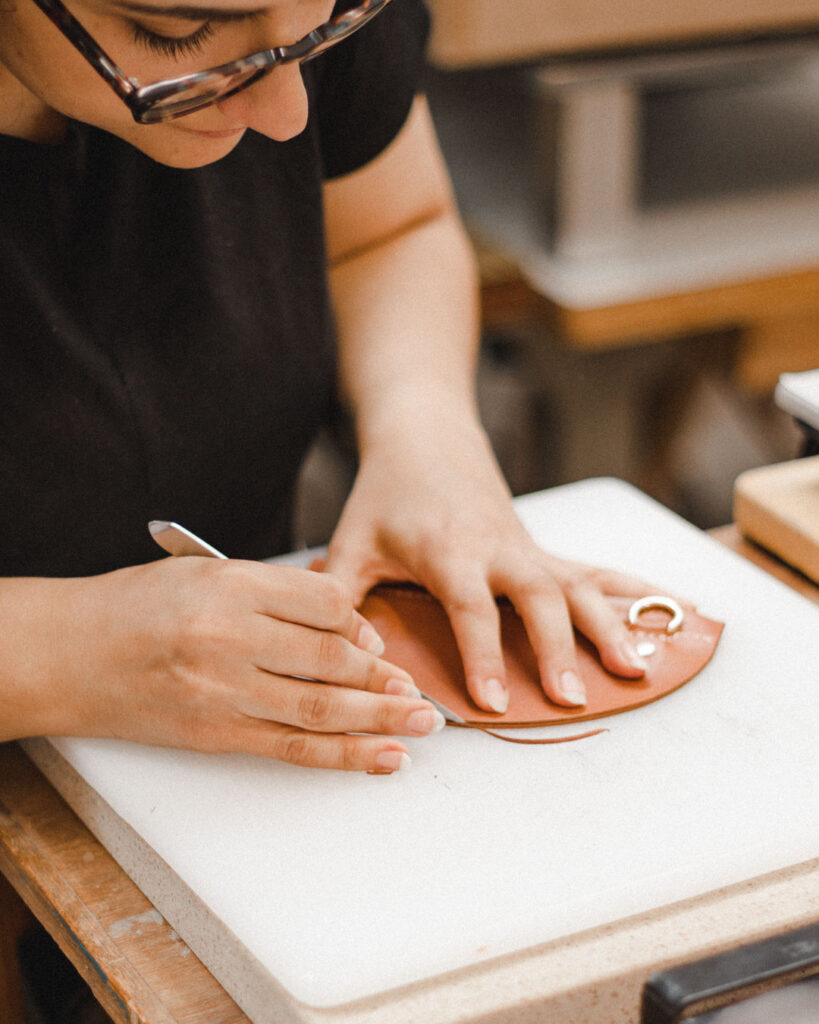
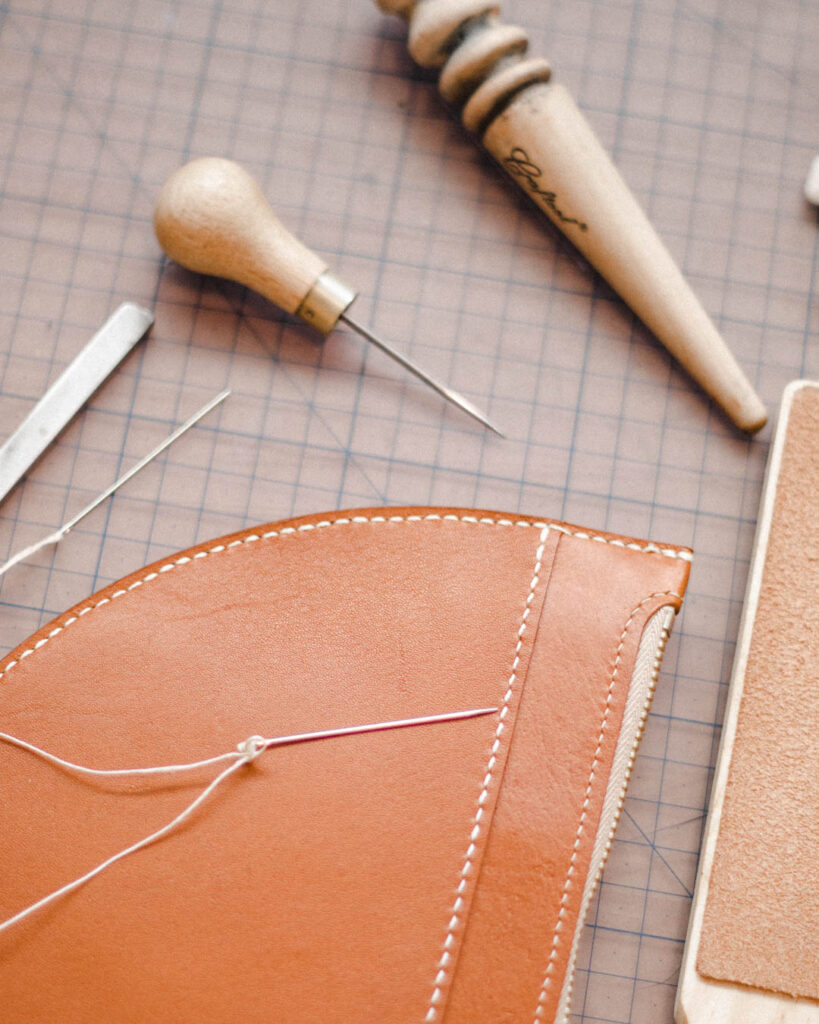
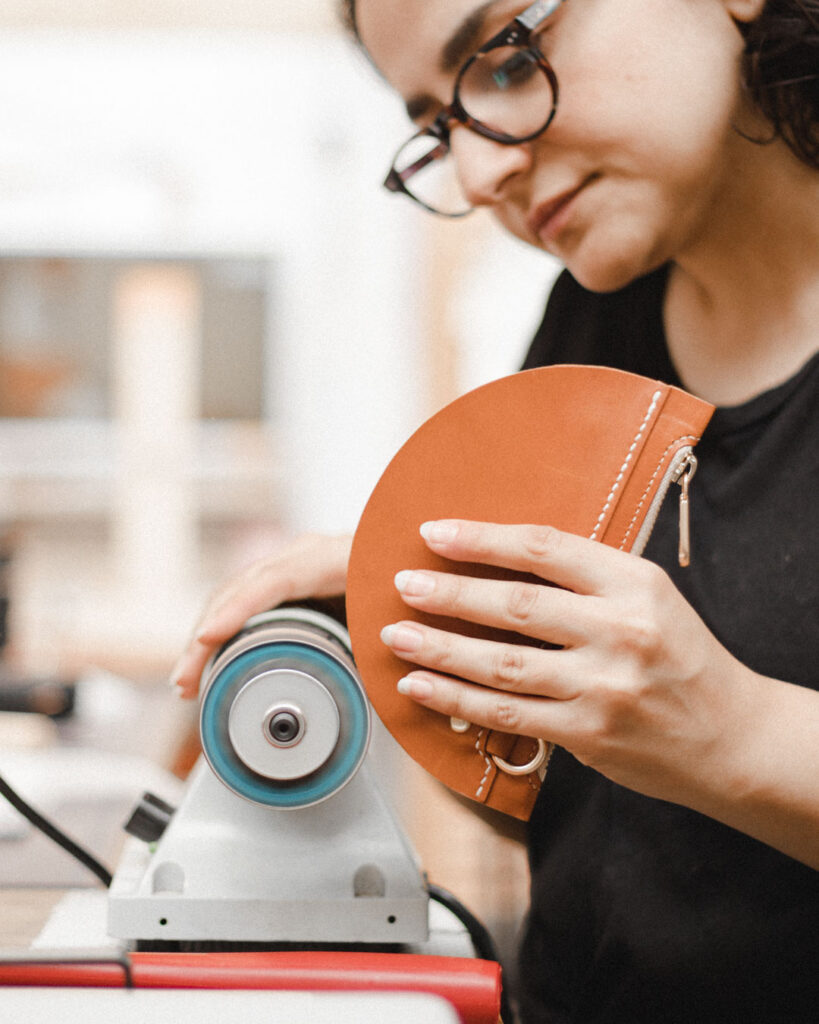
Tell us a little bit about yourself, your background and why/how you started Simetrie?
I was always a creative kid, making toys and things to play with from the paper & cardboard recyclables at home. Mum taught me how to knit and sew from a young age too so when the opportunity came to learn more on fashion at high school, I naturally gravitated towards it.
I absolutely loved making clothes and aced the fashion course in high school and went on to study a Bachelor of Fashion at RMIT. I made my entire graduate collection from leather having designed oversized accessories that could be worn as clothes. The collection was more of an art parade than a runway of wearable pieces, with the theory observing the often-unexpressed side of luxury; rap culture and luxury goods – the motivations of obtaining luxury goods to showcase status and rising to the top, specially from disadvantaged or marginalised groups.
I grew up in a low socio-economic area and for a long time felt part of those disadvantaged groups. It wasn’t until University that I realised my privilege, and then it wasn’t until I worked in industry for a period of time that I realised I could use that privilege and my skills in fashion to try to make a difference.
How would you best describe Simetrie’s design aesthetic?
The Simétrie aesthetic is clean geometry with a nod to vintage. I am inspired by nature and am continuously in awe of Australia’s landscape which is where many of the colour inspiration comes from. I particularly love boxy shapes and unexpected 3D silhouettes and I think this shows in the handbag collections I’ve made so far. Although the shapes are clean and geometric, it’s the refined details and exciting proportions that make them so different. I think I am still finding my signature, but the combination of clean shapes, handcrafted details and unexpected proportion is what makes it a Simétrie bag.
When getting to know your work one of the main things that stood out to us was Simetrie’s ethos and the importance on sustainability, craftsmanship, slow fashion and fair pay. We absolutely love this about Simetrie. Can you tell us a little bit more about your ethos and why these values are so important to your brand?
The factors you listed are indeed so important to the way I do business with Simétrie. It is well documented that fashion is a vastly exploitative industry when it comes to treatment of workers, paying fair wages, over-producing goods, and contributing to the negative environmental impacts that are leading to climate change.
I started the brand with the commitment to support the solutions, as a way to fight these problems, focusing my efforts in the handbag space where I had good design and construction skills. That meant using traditional handcraft techniques and practices to make the handbags, which is a slow process.
The result is that our bags are not only beautiful to look at, but they are also beautifully made and therefore will last a very long time, further cementing our pledge to slow fashion. The materials we use are the strongest natural materials we can find to ensure that longevity, and also circularity, so that our bags will not contribute to landfills but instead regenerate soil for future ecosystems and growth.
We are not doing everything perfect yet, but we are striving for it. I am always looking for better natural materials to make our bags, and more streamlined ways of creating them too as I realise not everyone can afford the price of a one-off handmade bag. There is definitely a safe balance somewhere in there, I am still working on it though. The name Simétrie actually refers to ‘symmetry’ which symbolises a ‘balance between aesthetics and ethics’.
Can you tell us a little bit about your creative process/ and how you like to work?
If I’m creating a new design, the first thing I do is put pencil to paper. I’ll sketch a few ideas, iterate, research and solve as much as I can in sketch form. I’ll test a few concepts from the sketch in material swatches if I can, like a handle idea or a new construction detail on the bag, and then once I’m happy I have a good idea I’ll create the paper pattern that I use to cut the leather to make the first prototype.
The first prototype is rarely perfect, so this requires further iterations too. Where I can I collaborate with the other leatherworkers in my team to ensure the final design is as refined and resolved as possible. A few styles we’ve released we’ve creating cutting moulds for, so they no longer need to be hand cut, but are stamped with an industrial machine. It makes the cutting process much faster but it’s quite the investment!
What’s a typical day at the studio/office for you?
No two days are the same – I actually wish I had a bit more routine! Simétrie is not my full-time job as I am still growing the brand, so I freelance to other businesses as a handbag designer to pay the bills two days a week.
The other three days I am mostly operating the brand on my own, with some help of some amazing freelance leatherworkers, a copywriter, and a marketing assistant to grow the business.
If there was a typical day, it would be checking the plan for the day, posting to social media, replying to emails and customer queries, then getting to the workbench for the rest of the day to get orders out. It’s rare I get a whole day at the workbench these days but it’s where I’m the happiest.
You also run leather-making workshops. Can you tell us a little about them and what someone can expect when they attend?
Before Covid I was running monthly workshops teaching individuals how to make the Crescent Moon Pouch and the New Moon Card Wallet. The focus of the courses was to teach bag making and give people the same feeling of pride that I get when I complete one of my bags. The class sizes were small, and the step by step guidance meant that even the most uncertain beginner completed a professionally finished bag that they were so happy they created.
Once the restrictions came into effect, I couldn’t teach face to face workshops anymore, so I knew I had to adapt the courses in an online format. I’ve simplified the designs slightly and created a new tote style for my new MADE FROM HOME range.
I’ve created these bag making kits especially for beginners, with a tool kit available too so you can participate in one of my workshops from home. I’ve also created online video tutorials and a Facebook community page so you can learn, ask me questions, show off your progress and create your own bag at your own pace. This is especially beneficial for people at the moment as people are isolating at home, potentially feeling lonely or anxious about the current situation, as the workshops help to calm your mind, nurture positive thoughts and foster creativity.
That amazing feeling at the end when you marvel at the gorgeous thing you just created with your own two hands is a great confidence boost and helps to motivate you to take on bigger challenges. This is the same encouragement that basically got me to where my bag making practice is today.
How would you describe your personal style?
My personal style is very hard to describe actually! I usually dress for comfort so am known to live in a relaxed trouser with a fitted t-shirt [and now that winter is here + jumper] combination.
I particularly like man styling even though I have a curvier body shape, but I prefer it for its functionality. I also love 70s style, like flares, loose shirts and corduroy. I like organic style prints, and organic finishes like a raw edge and considered details, or details unexpected.
What are 5 essentials in your wardrobe?
At the moment, thermal layers are up there with essentials! A few pairs of jeans to rotate, a denim jacket, a few cropped t-shirts, a loose open shirt worn as a jacket, wide leg pants, wool cocooning jumpers. Currently looking for the perfect bomber jacket, and a few pairs of boots.
Where is your favourite place to shop in Melbourne?
I buy a lot of my clothes from op shops or vintage stores. I have clothes from Savers, Mutual Muse, Goodbyes (formerly Recycle Boutique), Lost and Found, Facebook Marketplace, and Vintage Garage. I also shop local brands like Hara and Lois Hazel.
Tell us about some of the people who inspire you and why?
I am inspired by strong women. I have a tattoo of Frida Khalo’s self-portrait on my left wrist (it’s a cover of a badly executed tattoo of Madeleine Vionnet’s logo). The stories of both women inspired me a lot during my studies at University. Both women strike me as having quite different personalities, but I’m equally drawn to both of them. Frida, so strong and resilient against adversity, and Vionnet so nurturing and pioneering. Both so talented and great in their practices. They both inspire me to aim for those qualities in life and business.
What would be your ideal collaboration?
Ideally, I want to be able to give back somehow to the traditional owners of Australia. I would love to work with an Indigenous community to make a bag collection using a combination of my leathercraft and their traditional artisan techniques.
I think my use of kangaroo leather is interesting in an Indigenous context – in remote communities of Australia kangaroos are often found on the side of the road, so the material is readily available to them in a sense. It would be an honour to teach communities how they can then work with the leather.
Woven basket and hand carved wooden components would also be amazing to incorporate into a leather collection. I think we could create something really special with these artisan techniques and at the same time try to help communities work together to create work opportunities.
What are the top 3 resources that you turn to for inspiration?
I’m inspired by people’s stories and experiences, so I listen to a few podcasts that follow how businesses are built. I’m also inspired by all art forms, so galleries, music, performing arts, documentaries are all sources of inspiration. I am also inspired by my friends in business, their resilience and motivation inspire me to keep going!
What else is on the cards for Simetrie in the coming weeks/months?
I was planning on getting two new bag designs out by July but due to the uncertainty I held off on these developments during the first lockdown. We’re working on these now however whilst social distancing and taking as much care in the atelier as possible, so fingers crossed Stage 4 restrictions don’t come by to ruin those plans again!
I am also working with SisterWorks and a Melbourne artist on a gorgeous handmade linen tote bag, but due to lockdown 2.0 we are working on ways we can deliver this as the members are not able to travel into their HQ. So this may be delayed until later in the year also. I am really excited about this project though as it will help to provide employment opportunities to the members at SisterWorks, and will be our most affordable bag in the collection which I am hoping will also support our communities whilst shopping for the essentials during the pandemic.
We’ve been so lucky to be able to re-stock the Thick Tote this month which has been received really well! We are so thrilled our community are loving this bag – I am currently using it as my everyday bag!
If restrictions ease up I am also hoping I can offer in-studio workshops again, but until then our MADE FROM HOME workshops are still keeping our community busy and happy at home.
Images by: Hands of a Maker / Nathalie Dumont & Candice Agius
